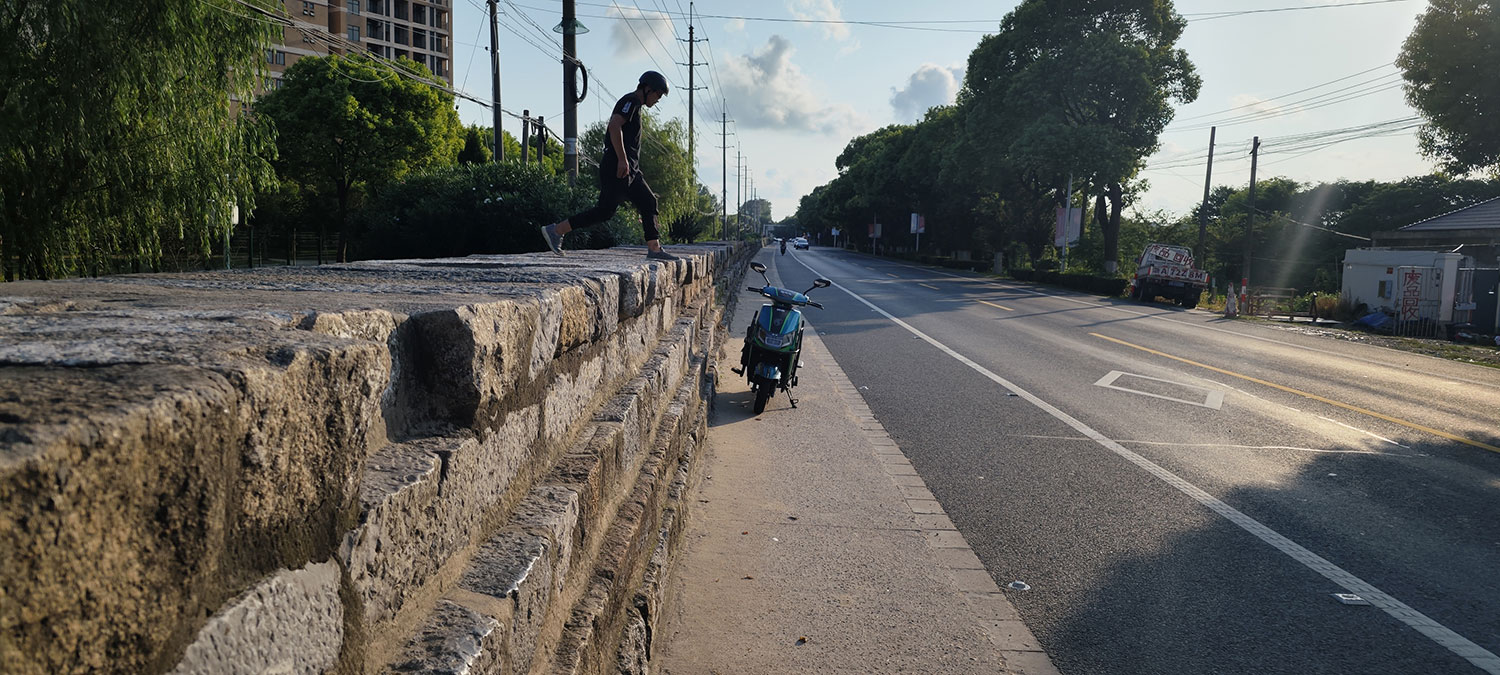The Great Wall of Shanghai?
Sort of.
This is the Huating seawall (华亭海塘) in the Fengxian district of Shanghai. 3.9 kilometers of stones are left — built centuries ago to keep floods and Japanese pirates out.


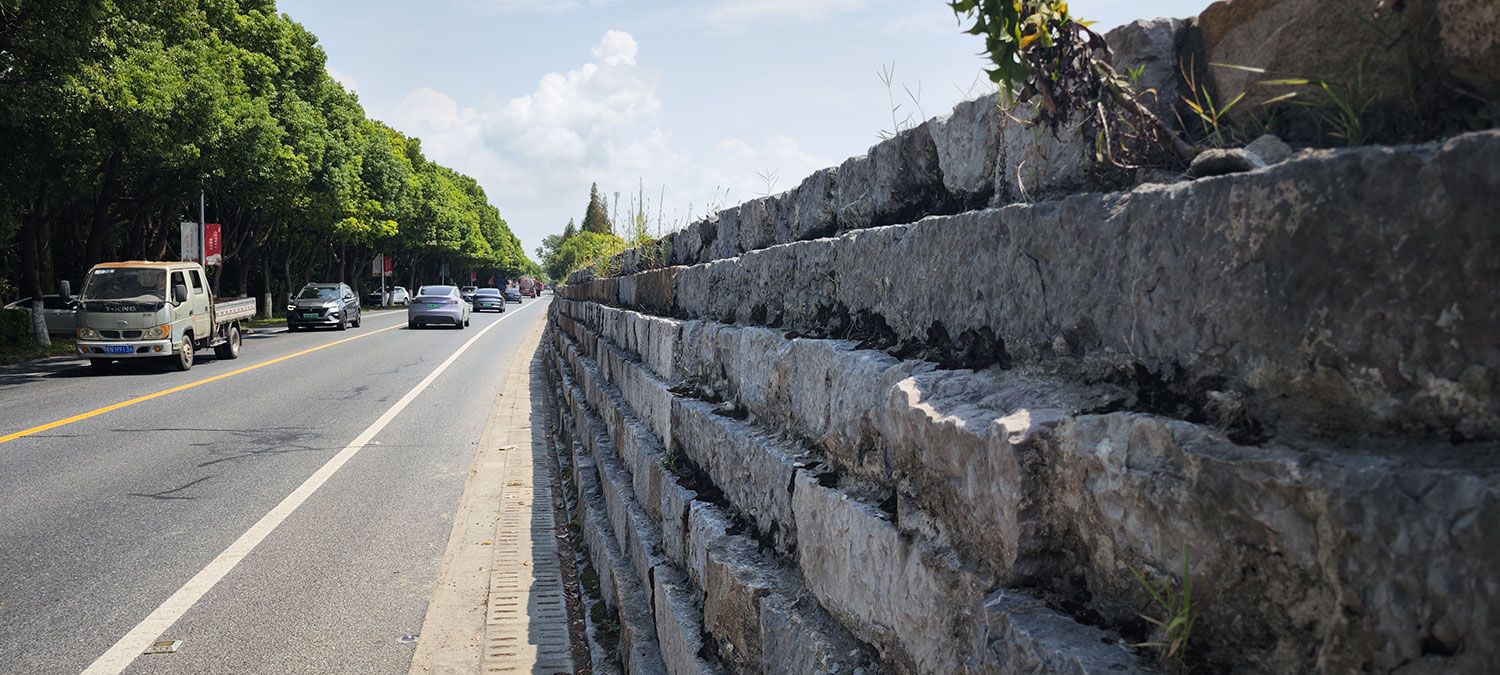
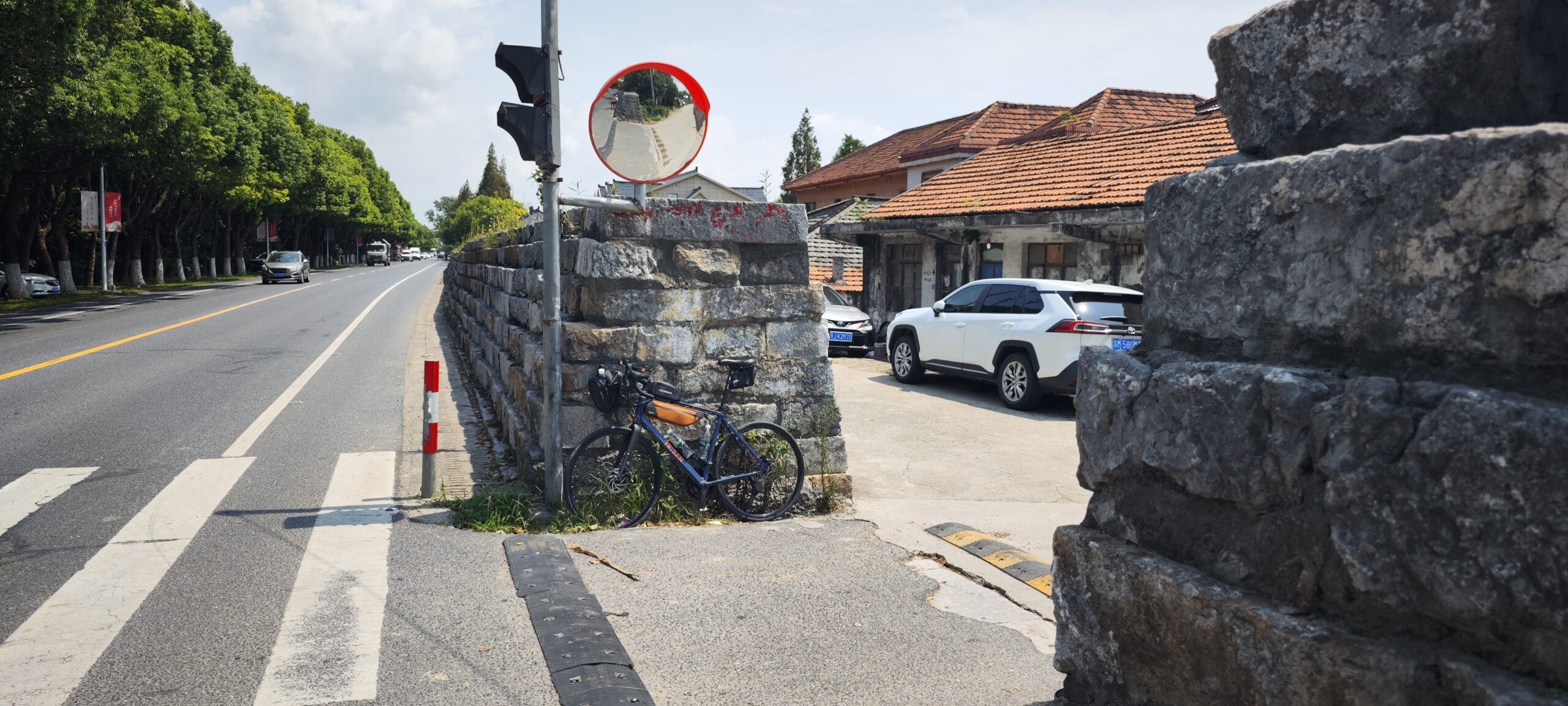
Actually, I’m not sure which stones are original. The history is fuzzy and long; different segments built by different magistrates in different centuries. Some articles mention the wall being 47.5 km long, others count a greater shoreline of Shanghai and almost 300 km of seawalls.



(Source.)
The stone dike isn’t so noticeable (actually we might have passed it half a year ago) but like many things; you only see it when you know about it. And it’s unique for such a large structure to remain: Shanghai’s own city wall is all gone except a tiny portion (which now houses public toilets).
The tide and pirates are problems no more, as houses stand on both sides now. But the wall still has a purpose. People refer to south of the wall as ‘Inside’ and north of the wall as ‘Outside’. (Which I don’t understand, as from a pirate’s (or tides’) point of view, north would be inside?)
Parallel to the wall are roads, used by trucks, cars, and scooters (and us on our bikes).

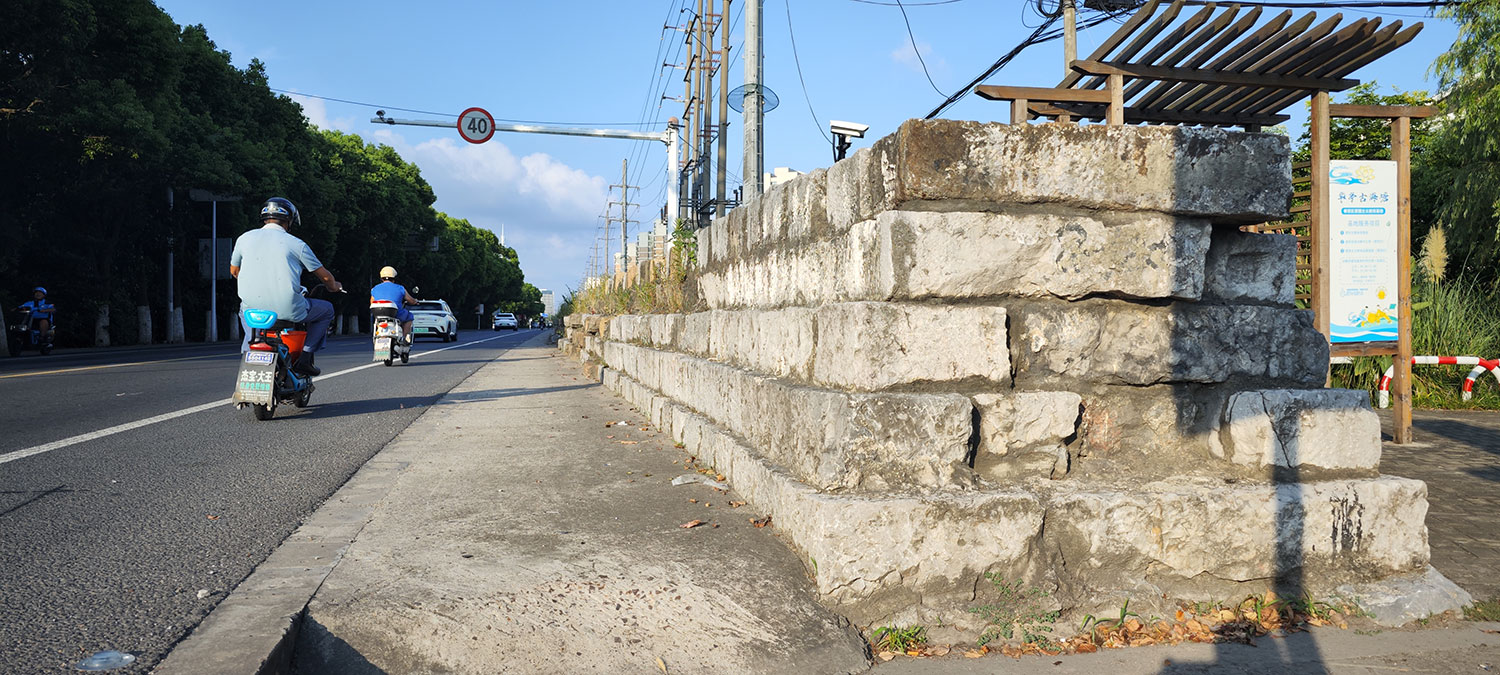

Plaques display the importance of the structure, giving an identity to the area. The nearby Jinshanzui Fishing Village (金山嘴漁村) is a tourist attraction and with signs of fishing boats, it celebrates the treasures of the sea: Huating’s wall memorizes the fight against it.

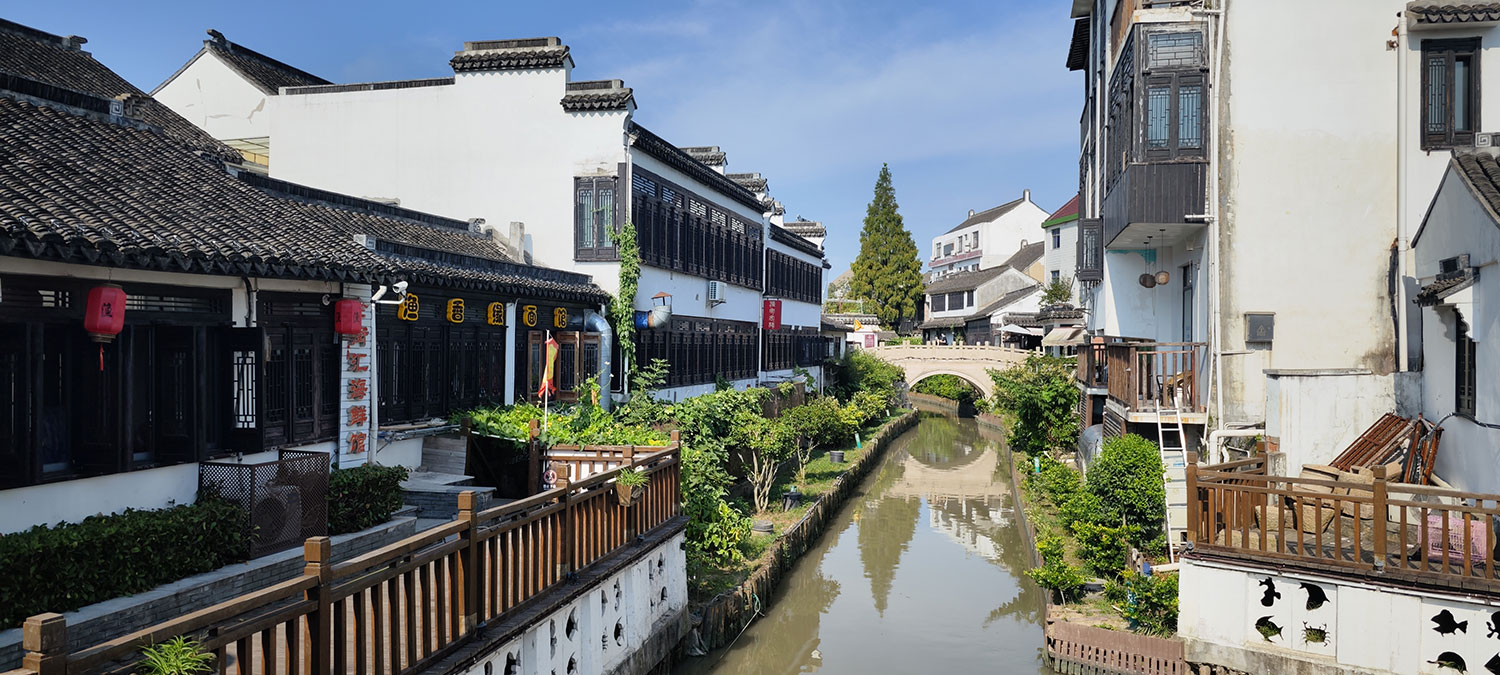

And as we’re about to head home, a delivery guy parks his scooter, and carries someone’s dinner as he climbs from ‘outside’ to ‘inside’ and back again. The wall does not bother him — may not amaze him — the wall is just here. And I hope it’ll be so for centuries to come.
